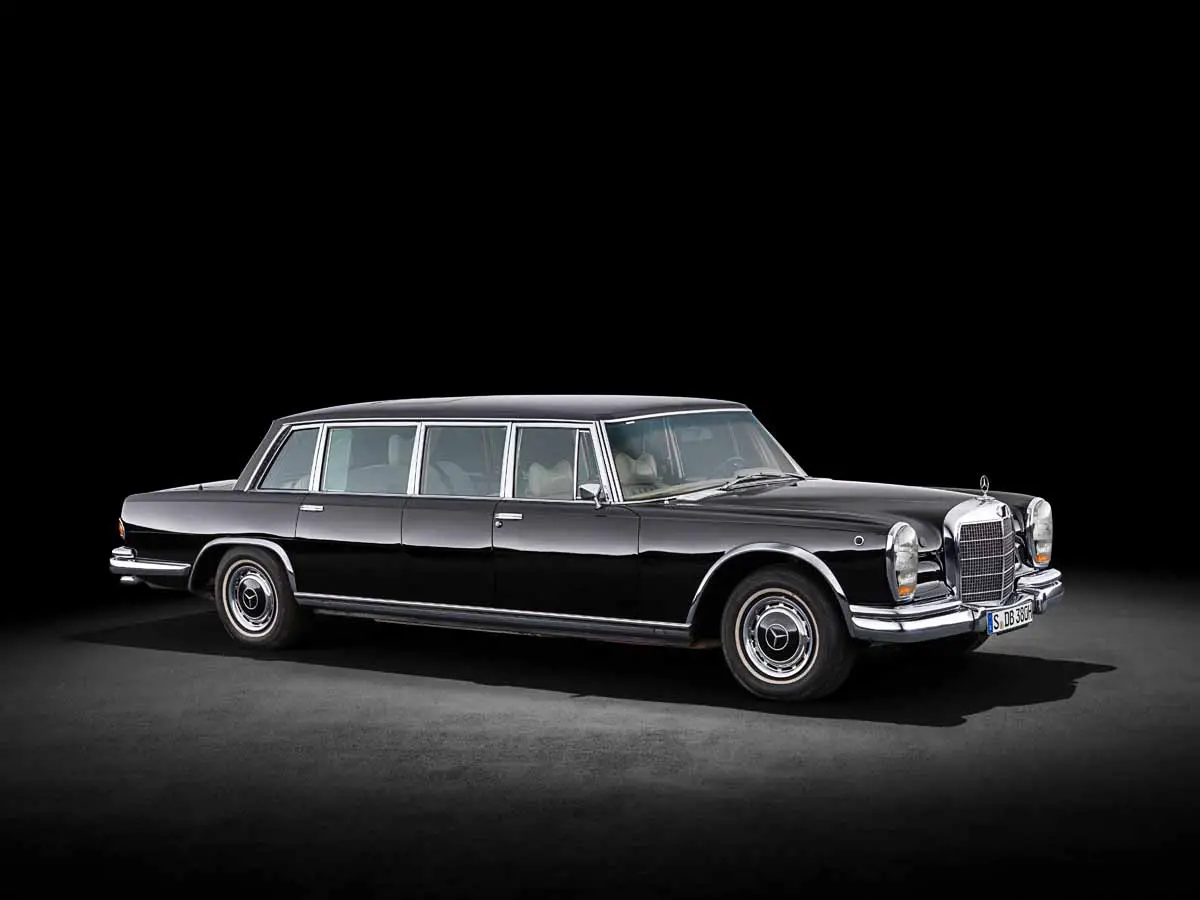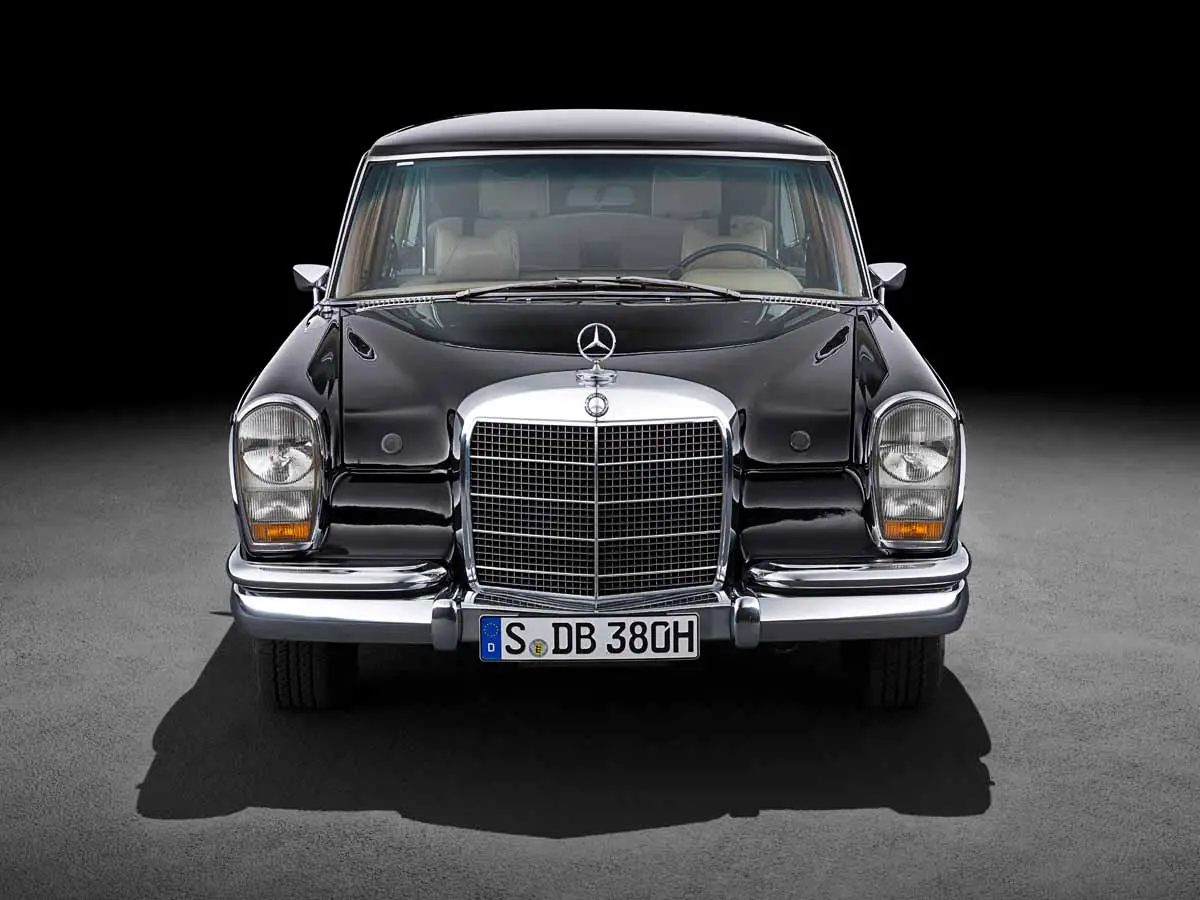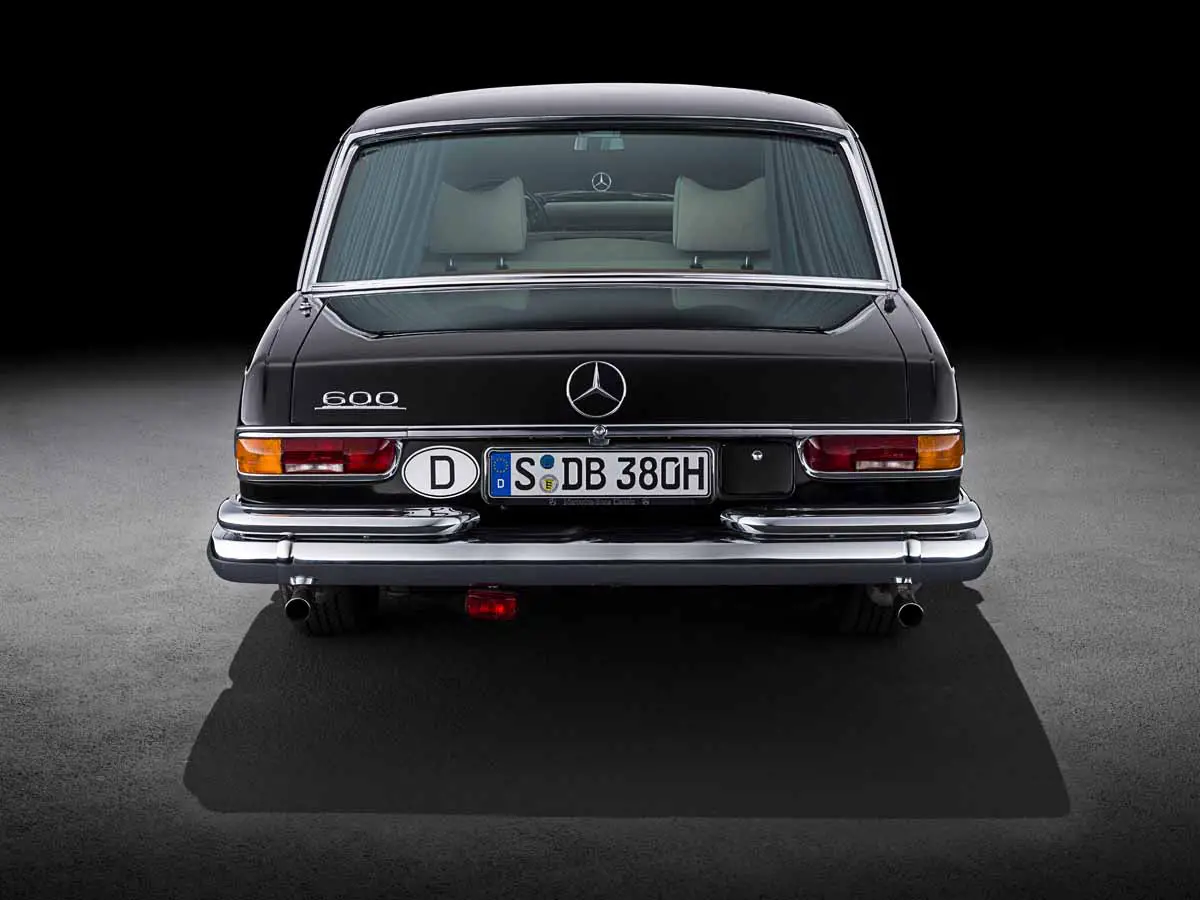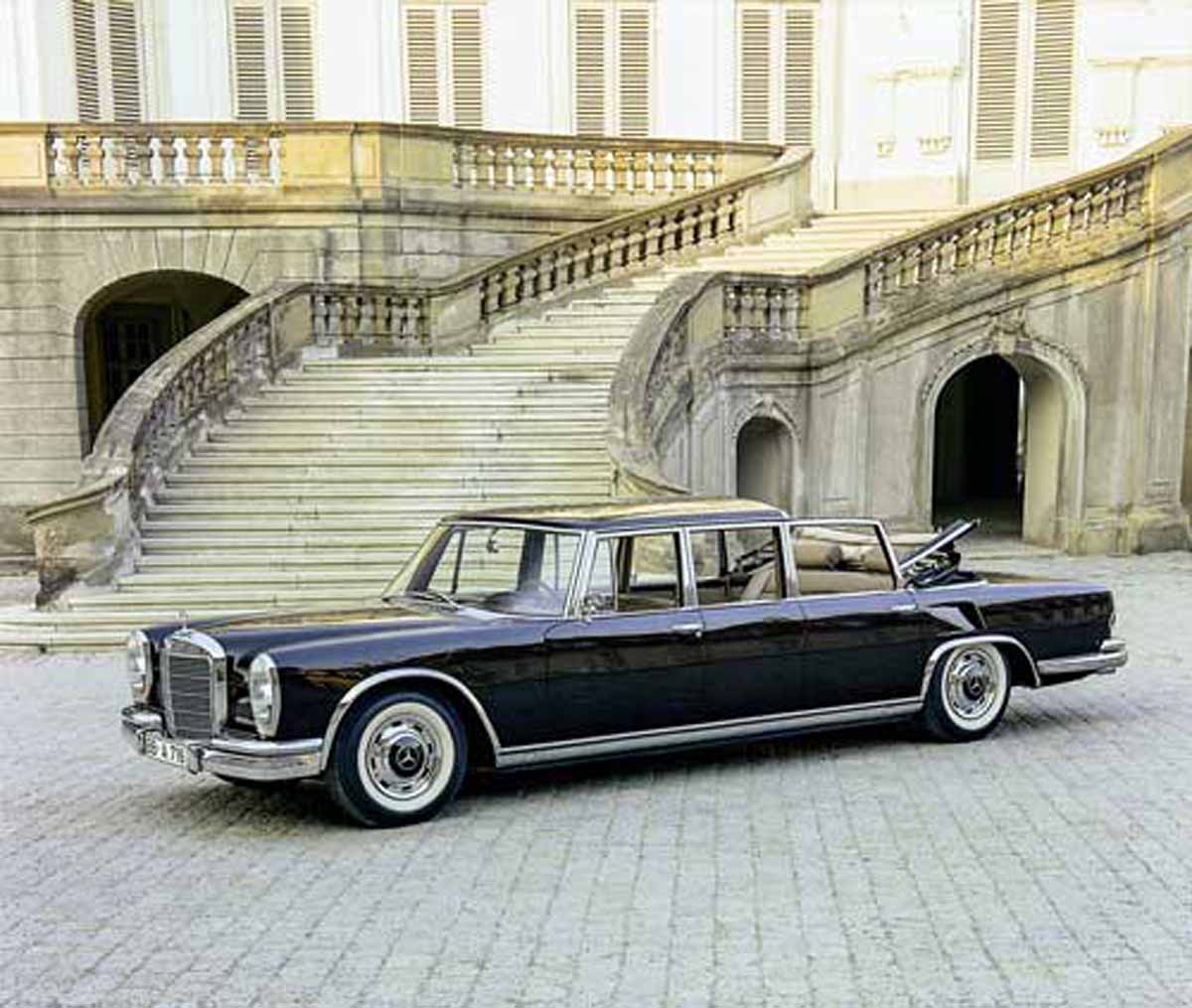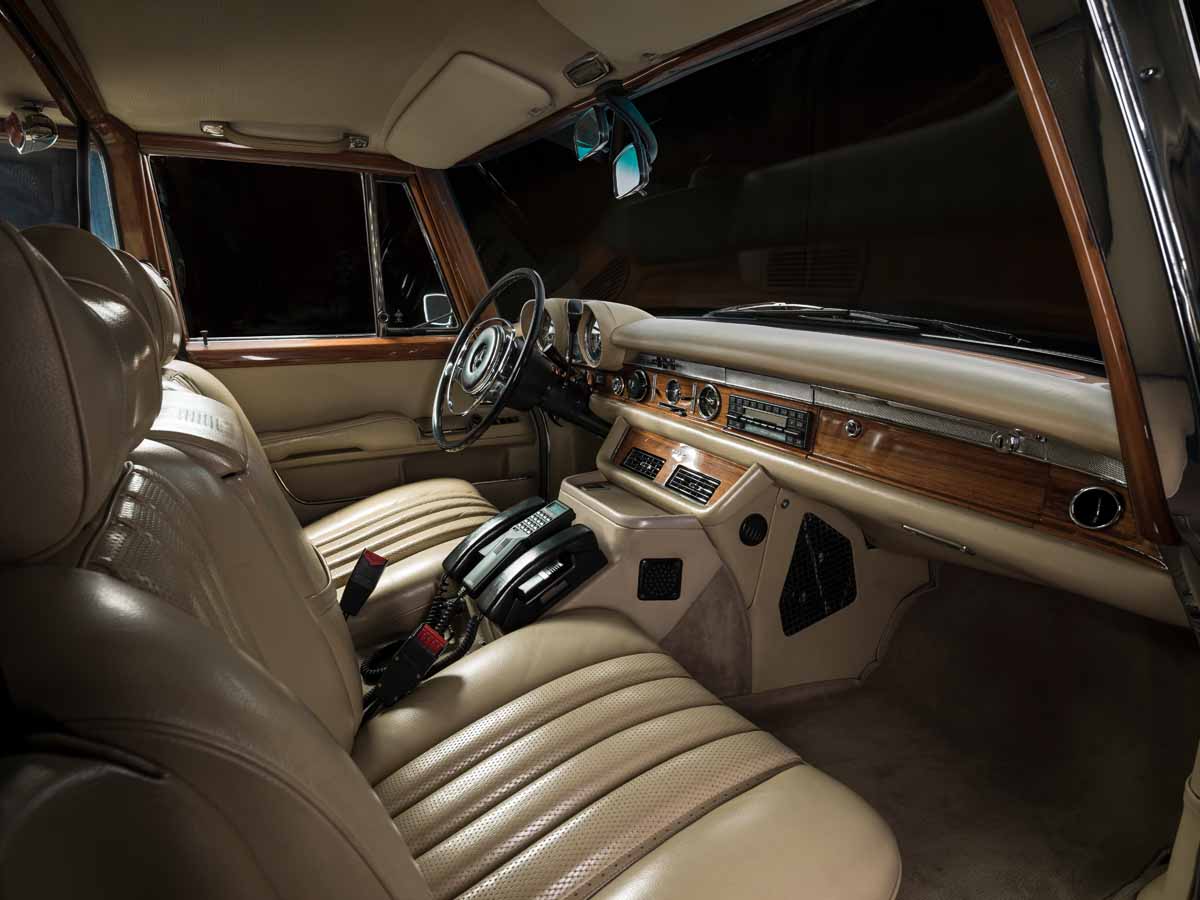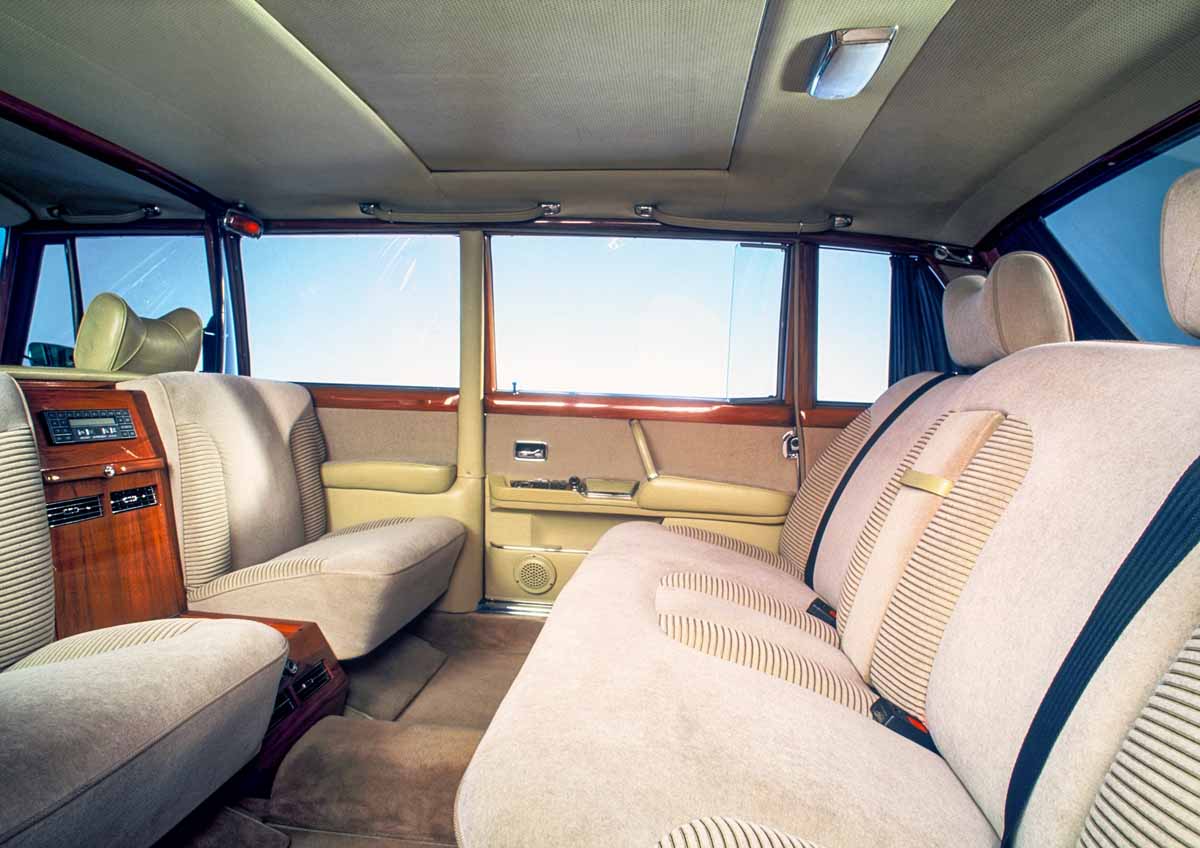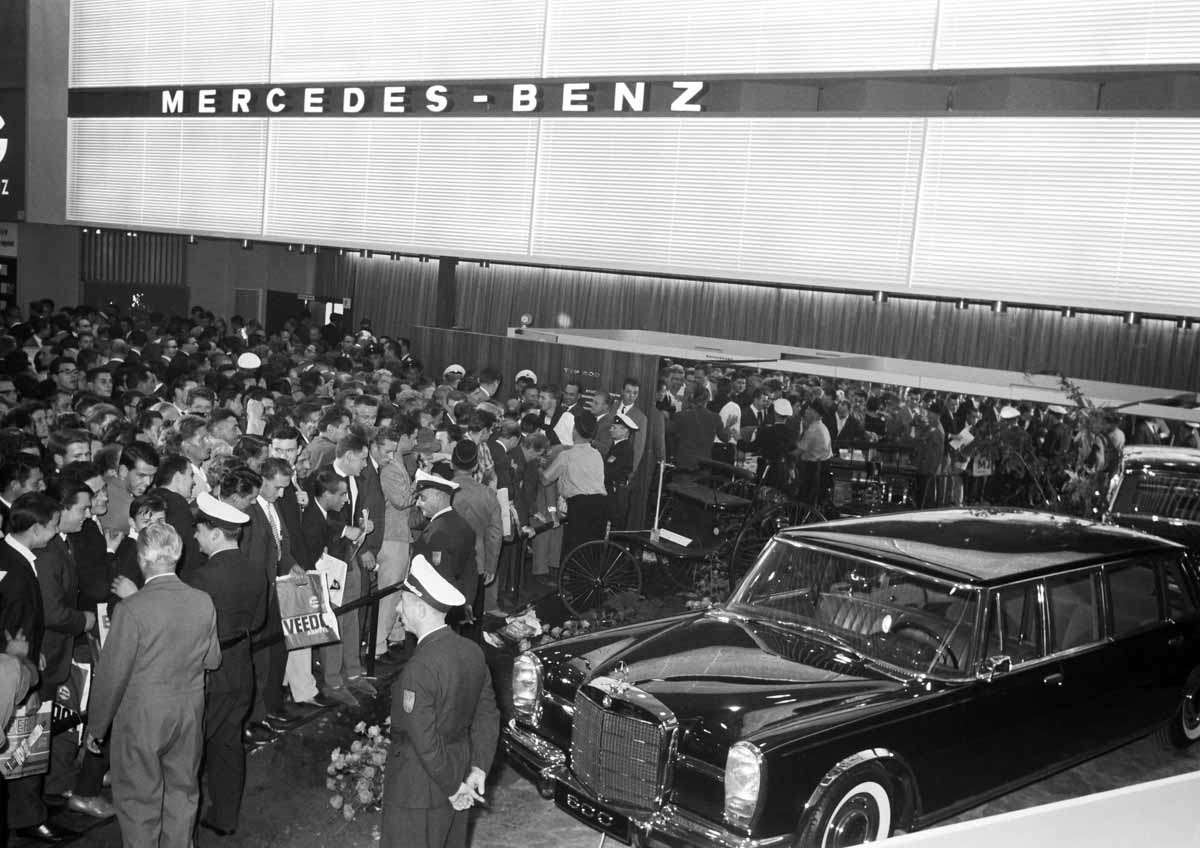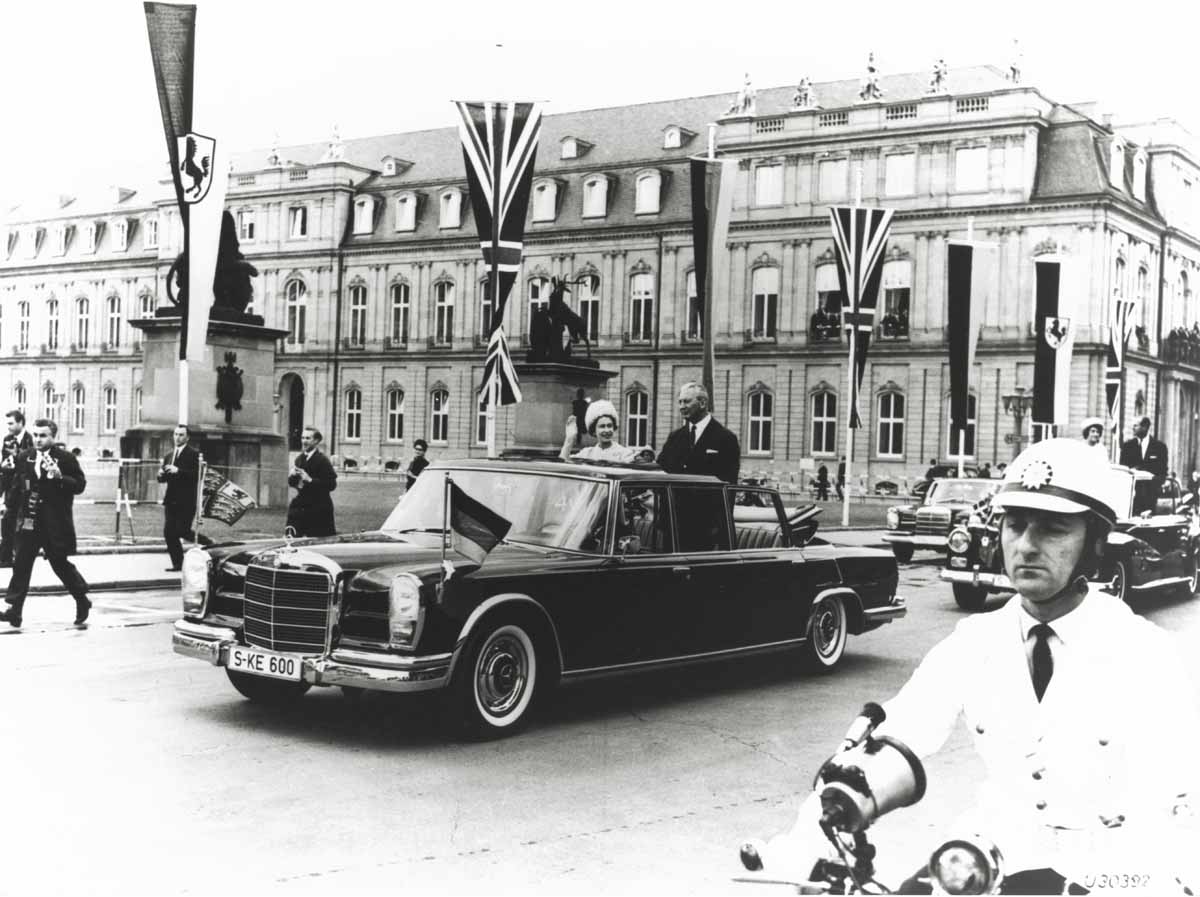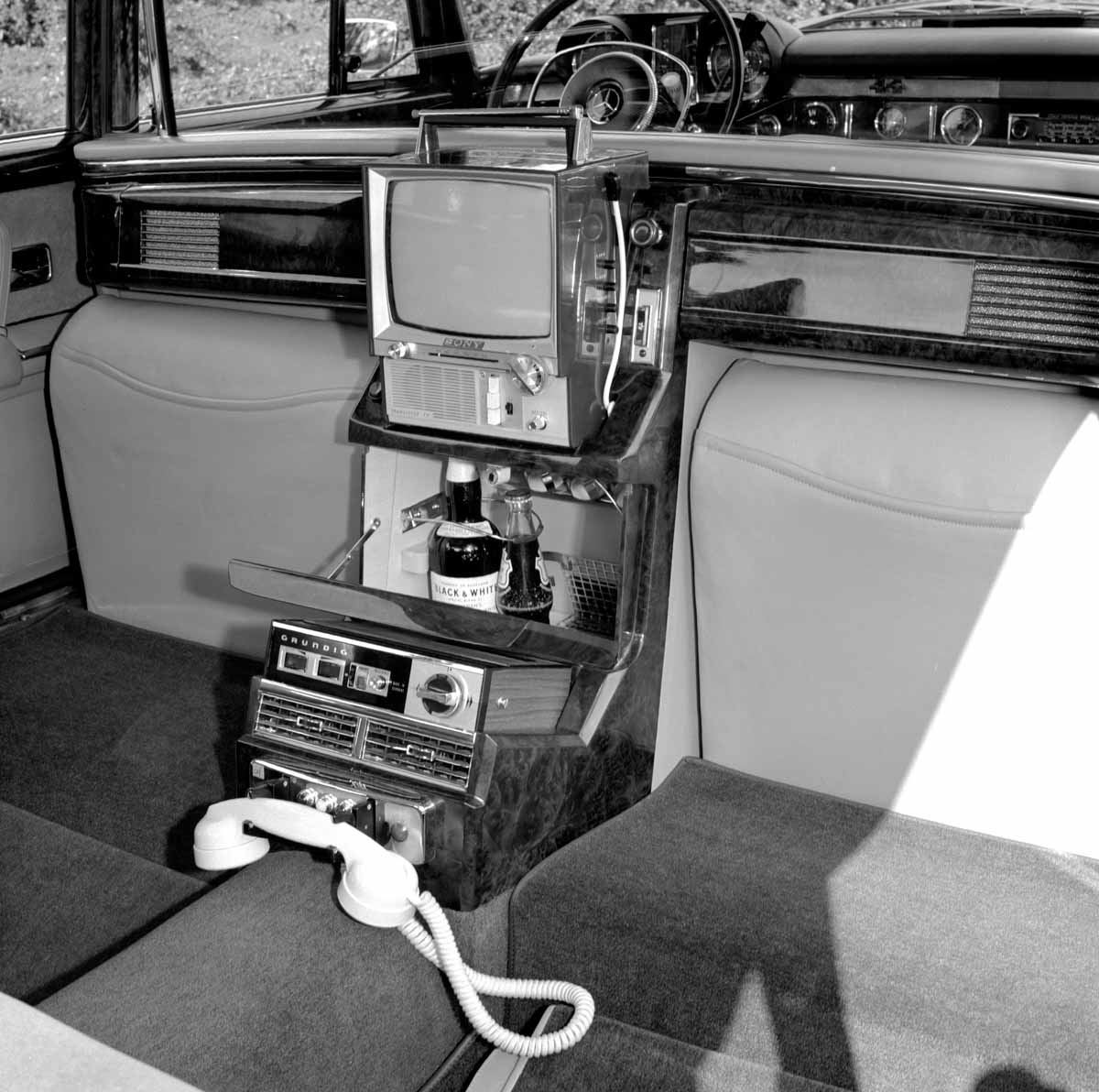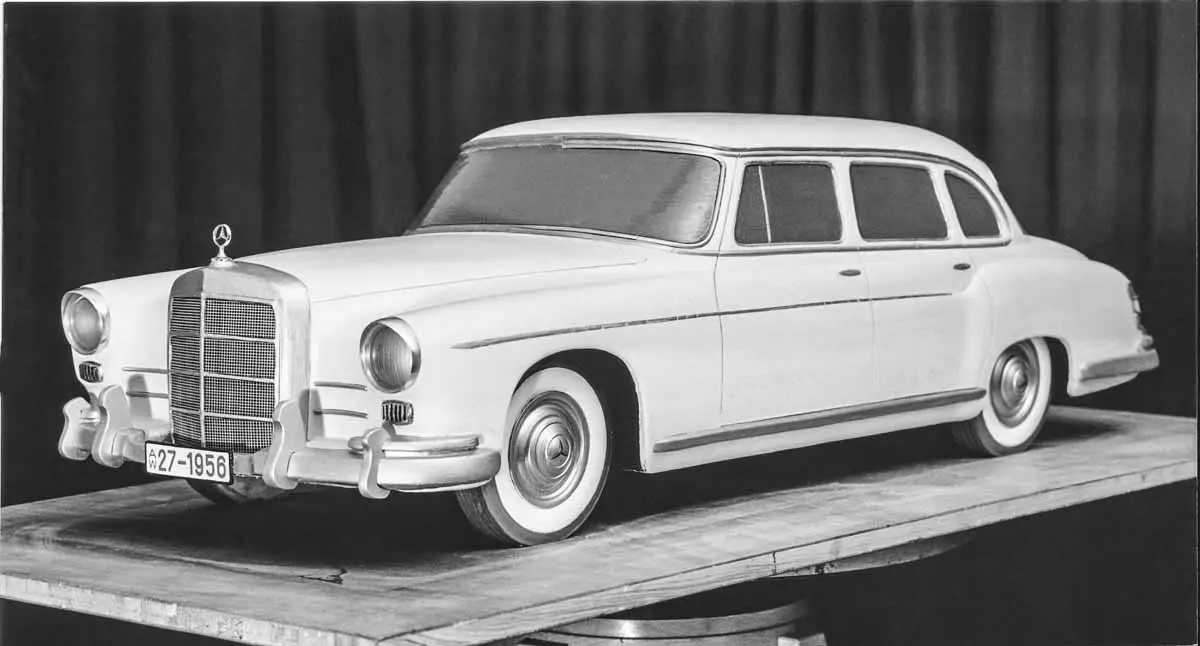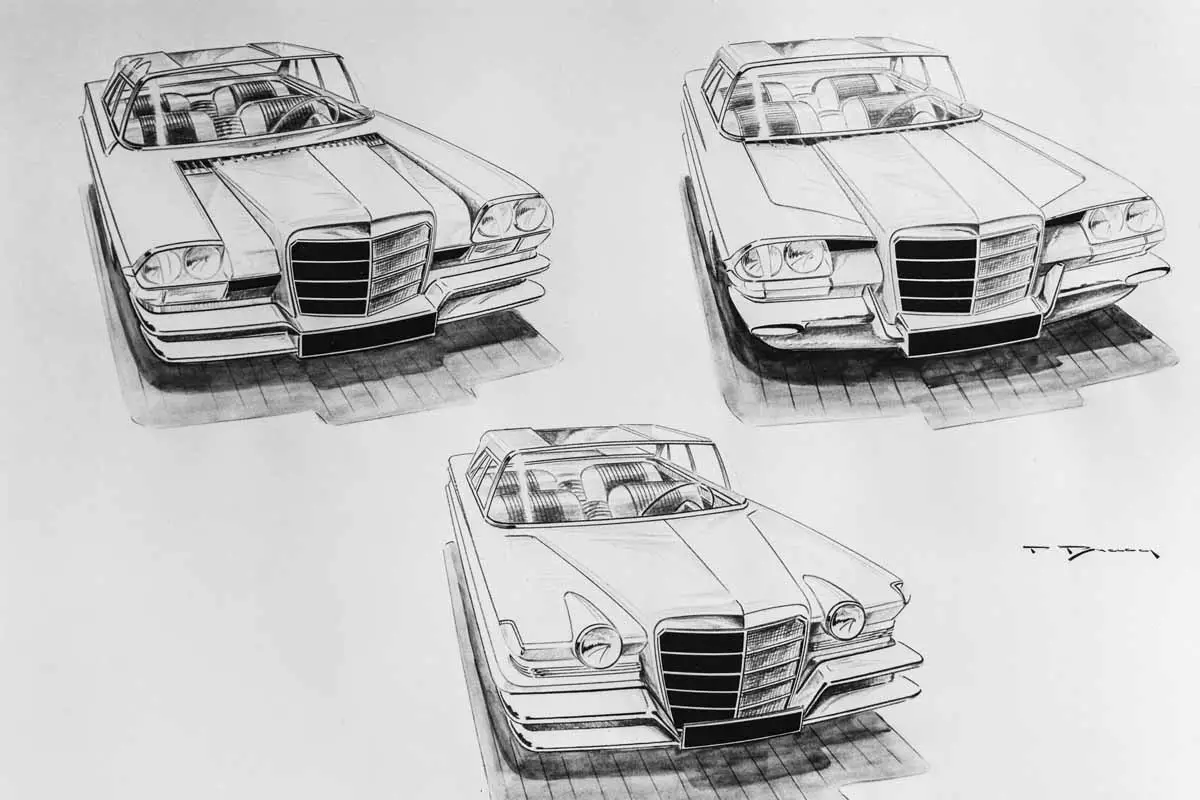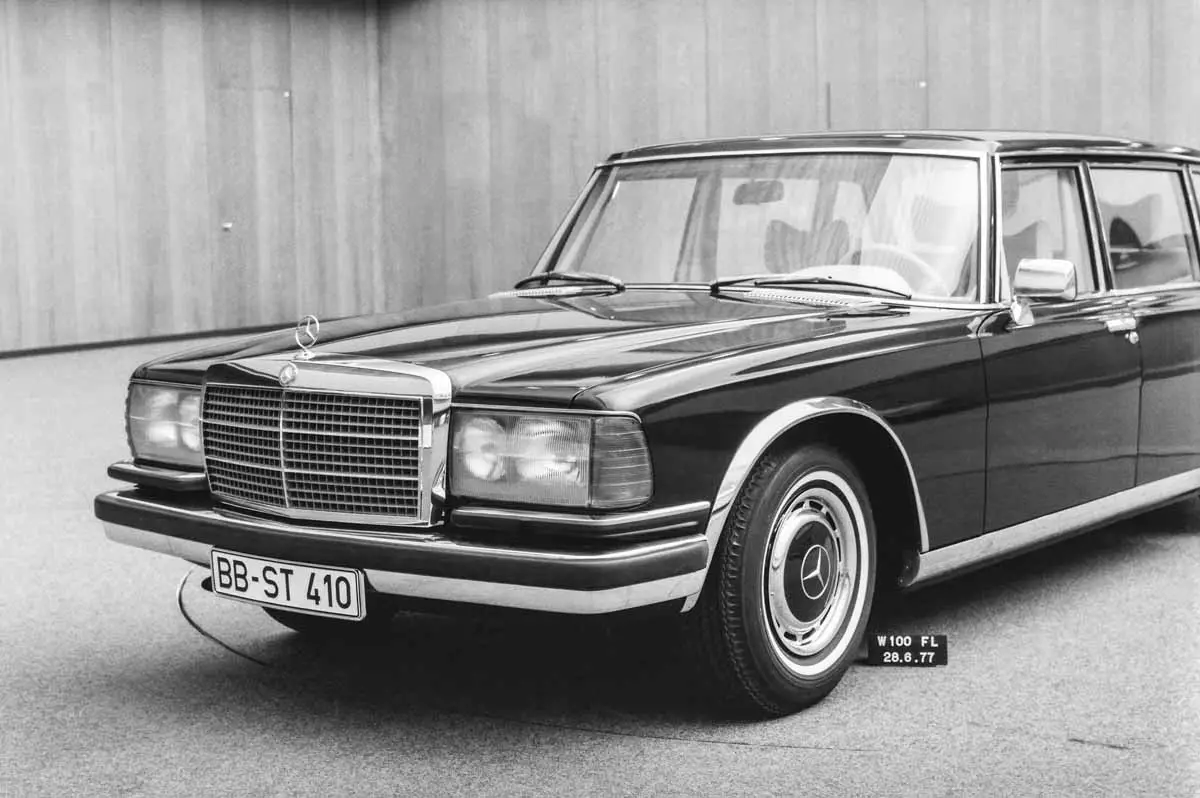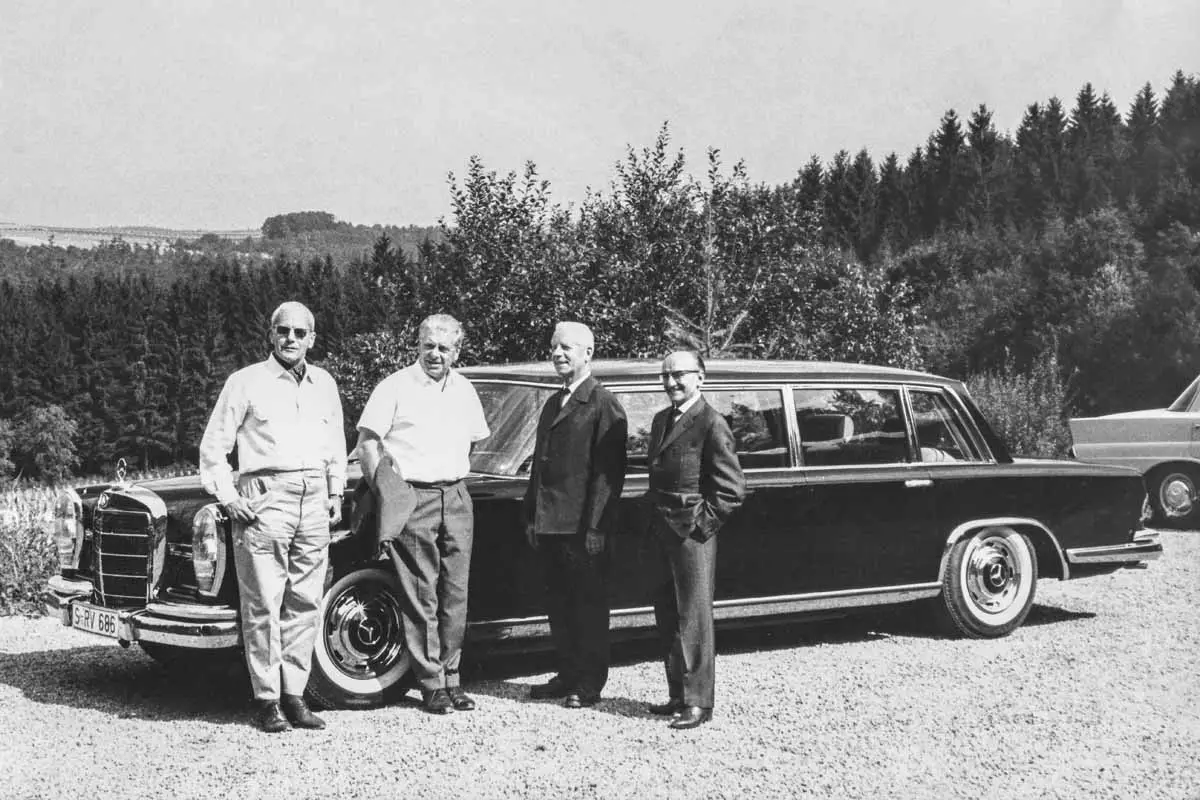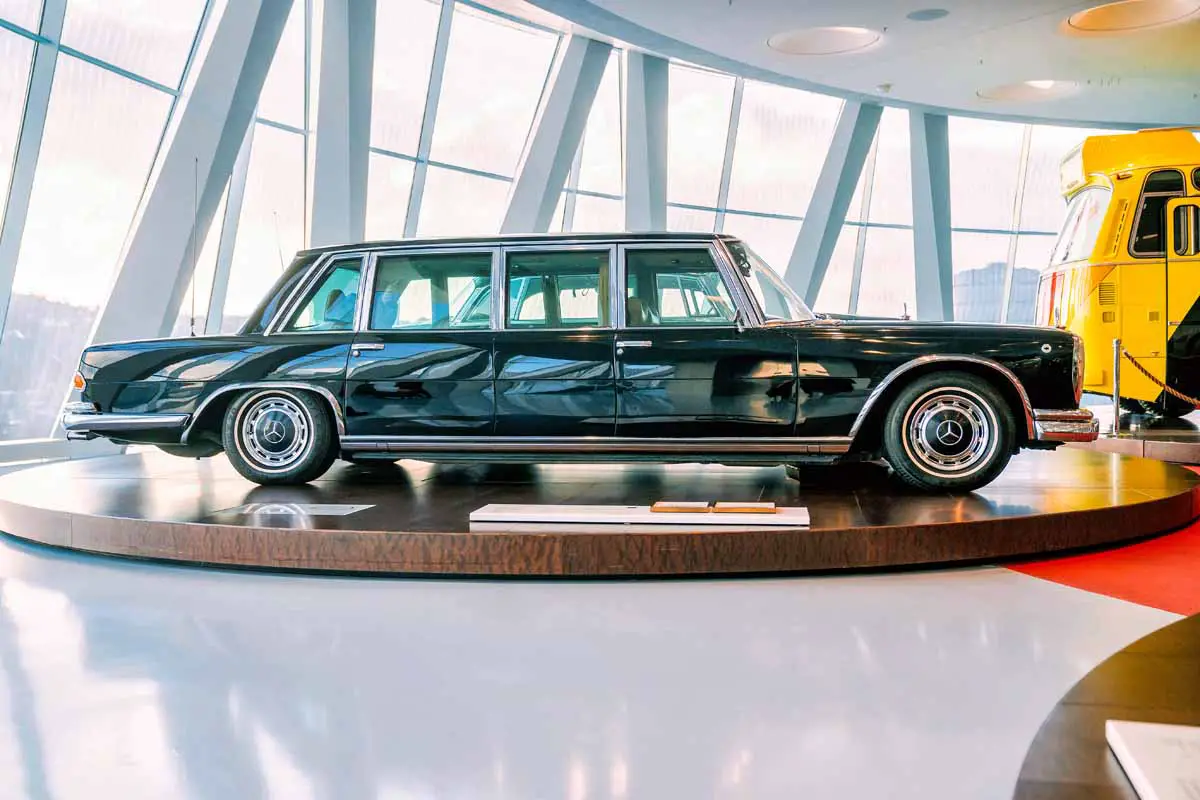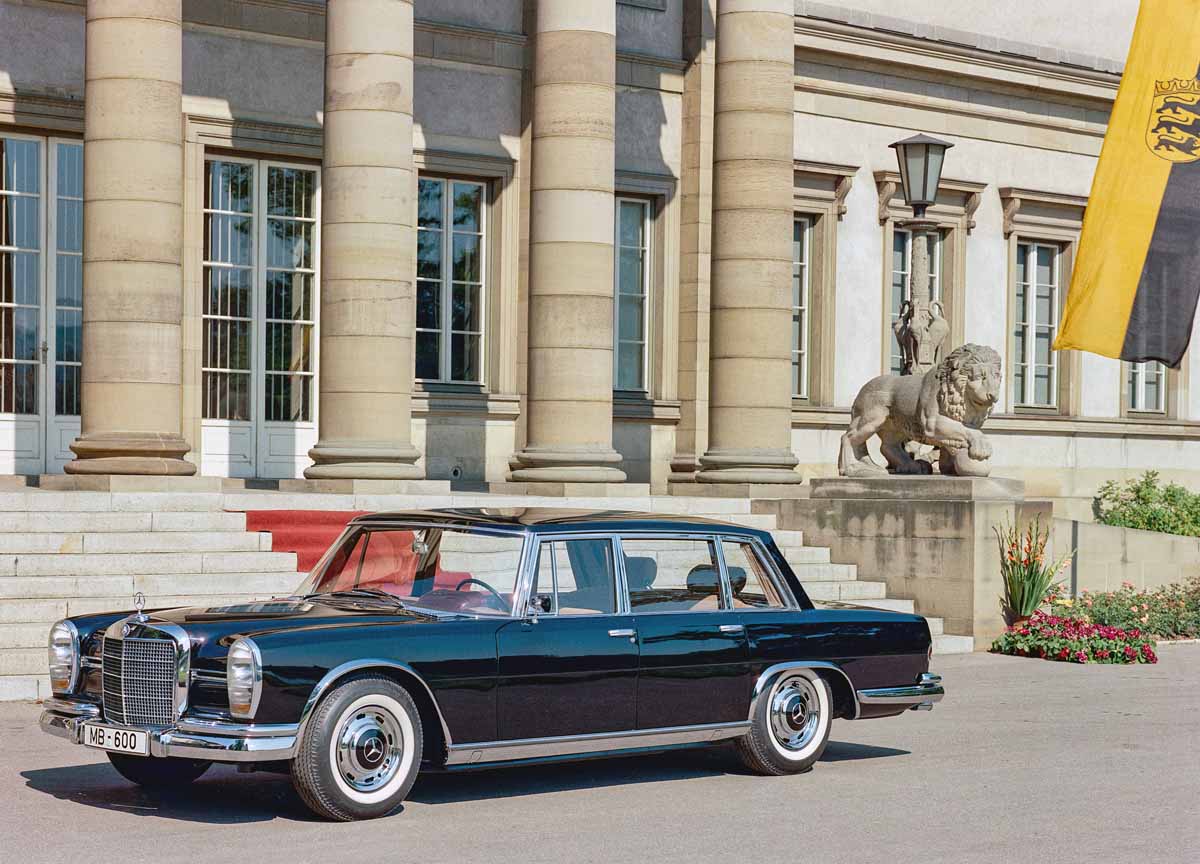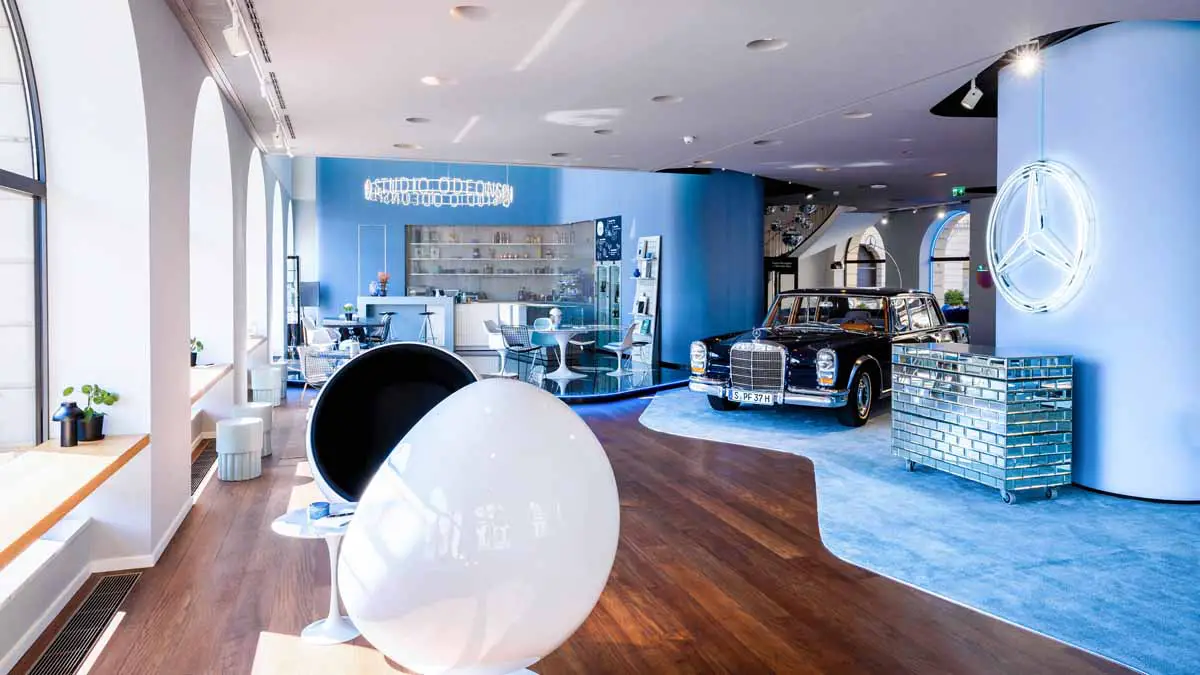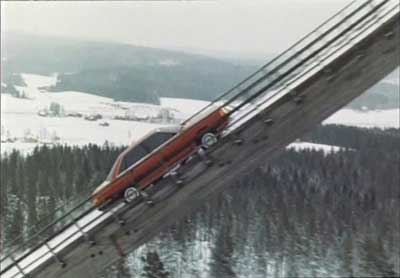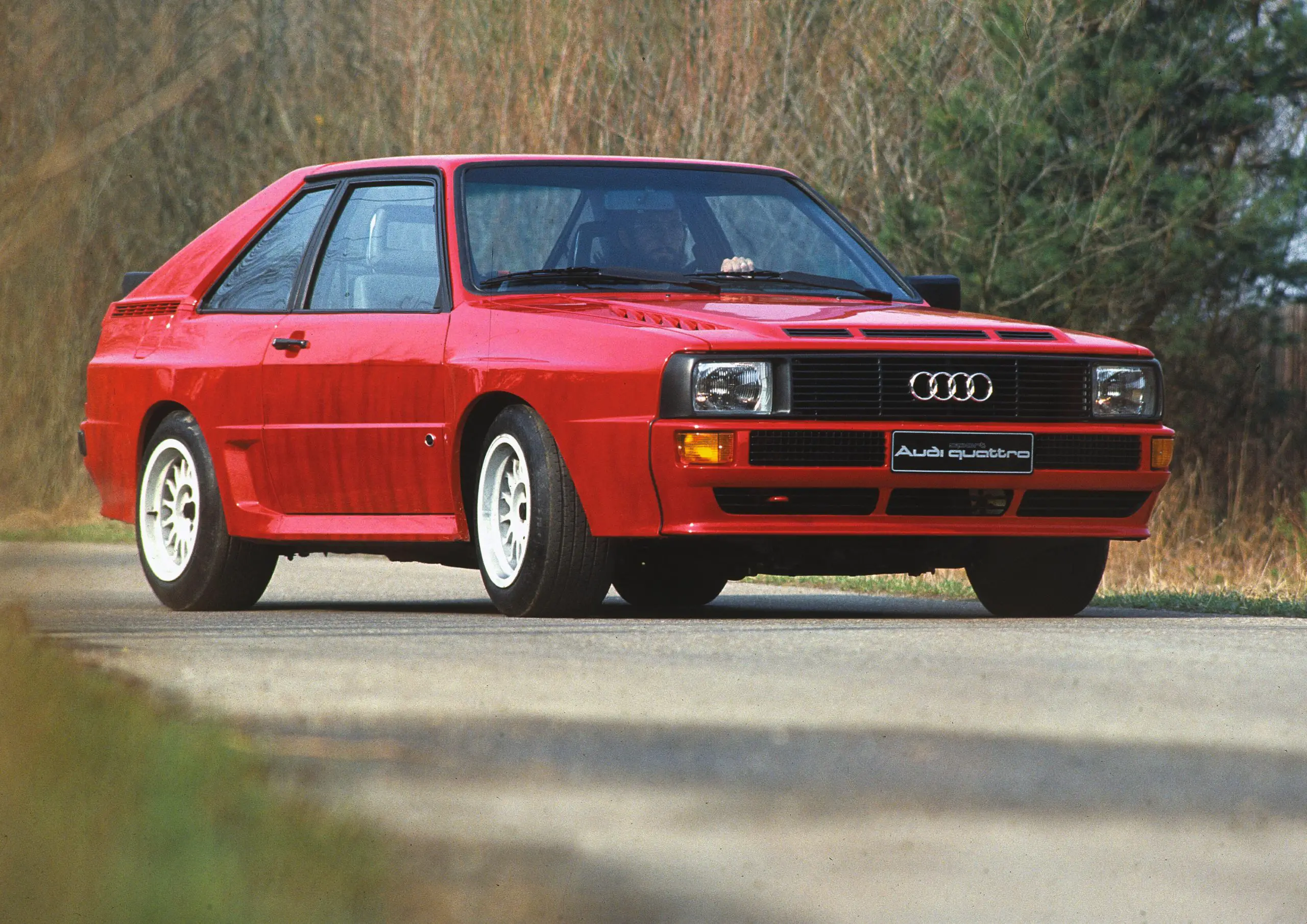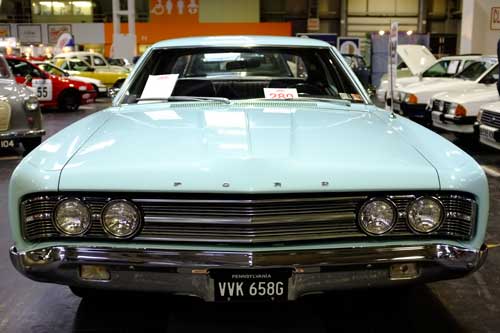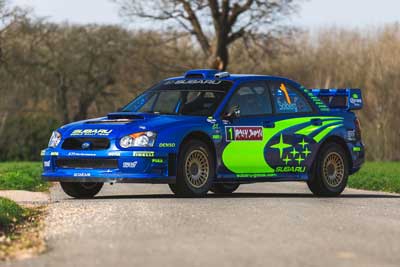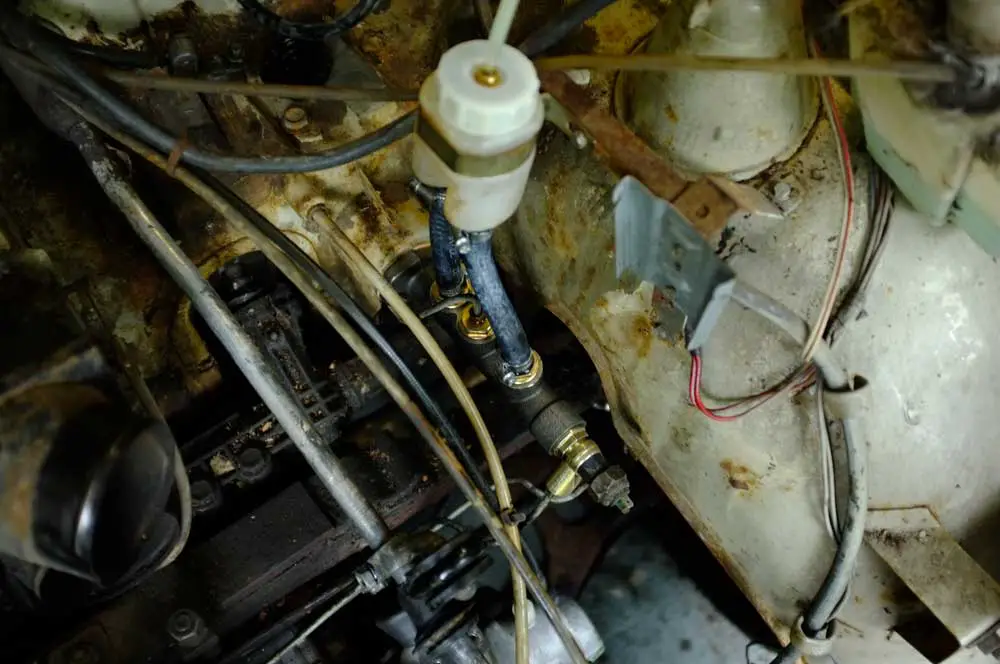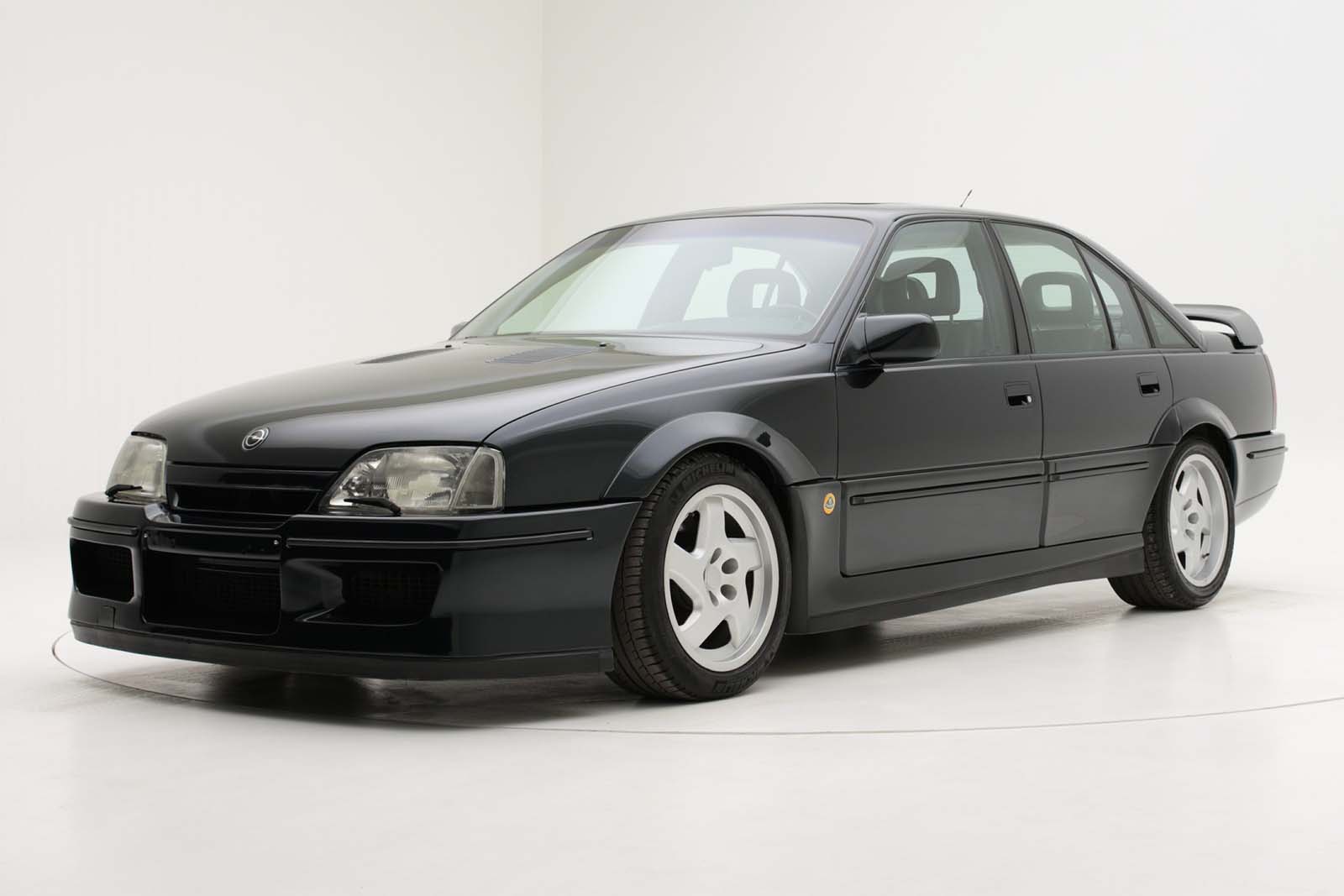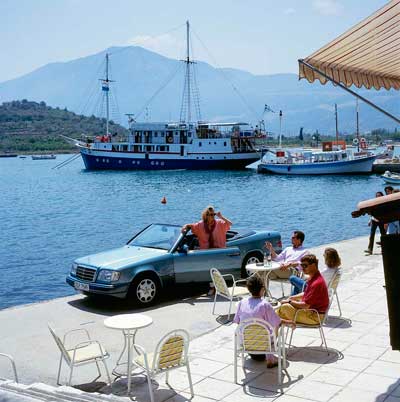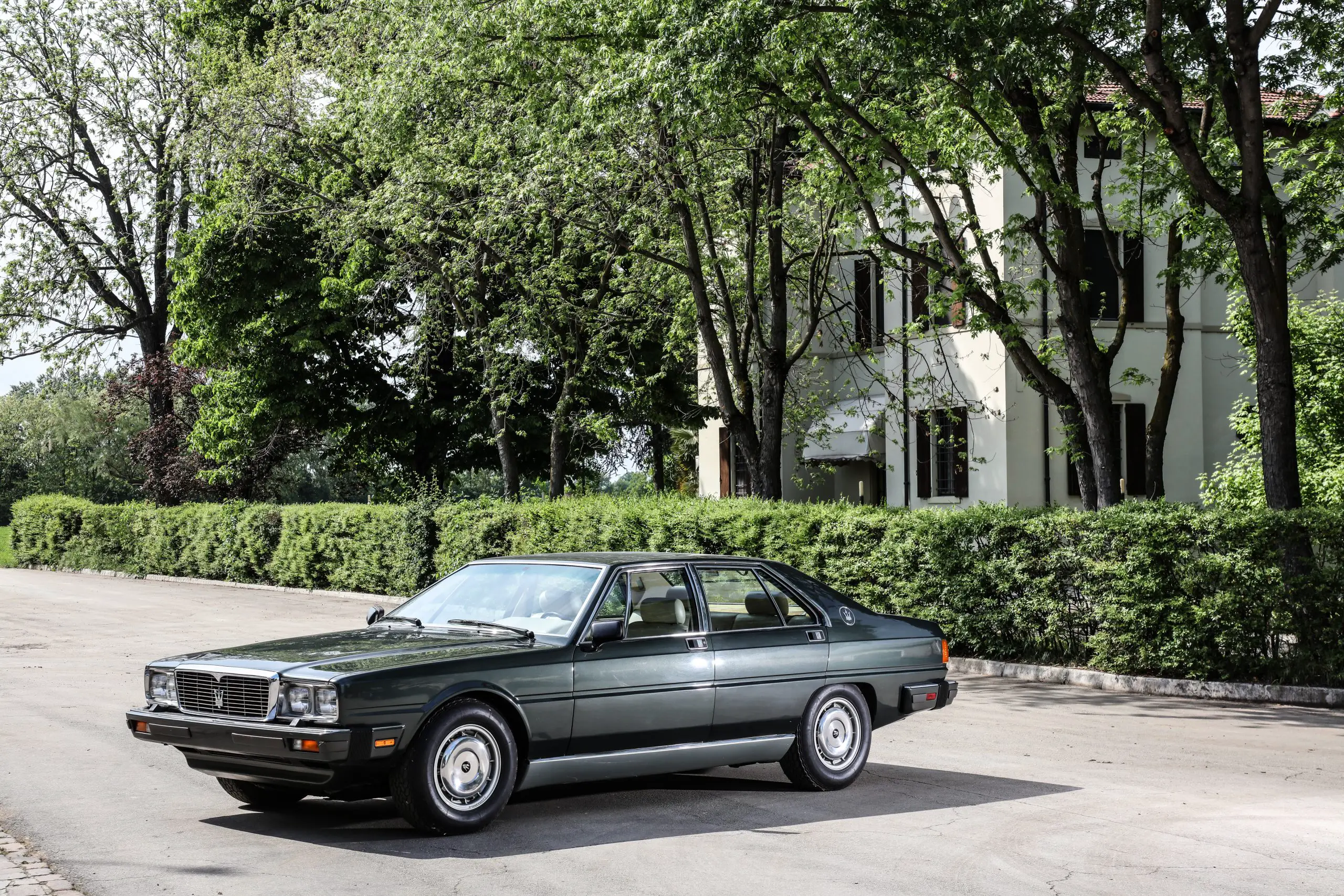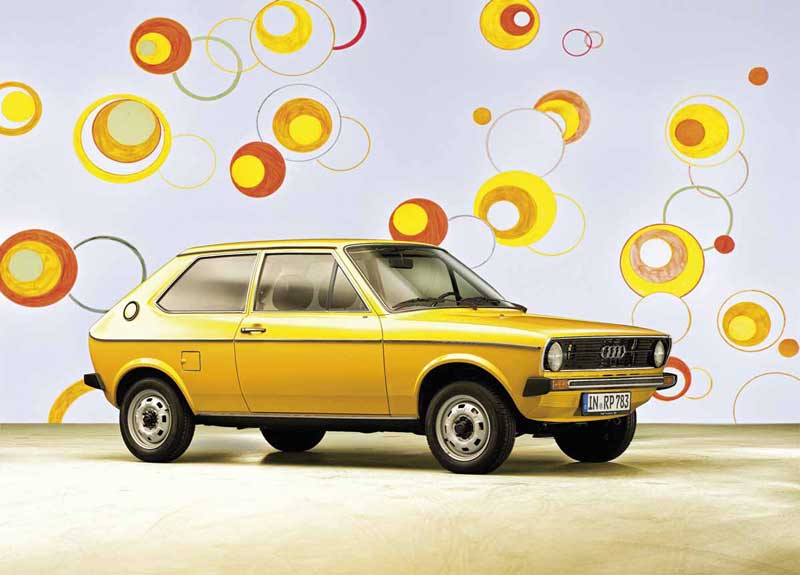
The Grand Mercedes 600 W100 An Automotive Benchmark For Over 17 Years From 1963 To 1981
The grand Mercedes 600 W100 represented automotive excellence and an automotive benchmark for over 17 years first appearing in 1963.
The 600 offered unrivalled passenger comfort, top-tier safety, and exceptional performance and was available as a saloon, a pullman and landaulet. The new standard for luxury featured new and innovative hydraulic systems powering several features.
Given the Tagline “The epitome of prestige and exclusivity” this headline firmly established the vehicle as the new frontrunner in automotive excellence. It wasn’t just an aspiration, the 600 really did just that.
Six decades ago, the press release stated:
“Continuing the pre-war heritage of delivering opulently equipped automobiles that offer unparalleled safety and driving experience, Mercedes-Benz proudly presents a luxuriously designed vehicle in the league of the world’s most sensational prestige cars.”
It went one to say.
“Mercedes-Benz continues the company’s pre-war tradition of being represented in the small group of the world’s sensational prestige cars with a luxuriously equipped automobile that is extremely safe to drive.”
As 2023 has been the year of the 600 it has so far been showcased in Studio Odeonsplatz in Munich and Techno Classica in Essen in April and can also be seen as a permanently displayed armoured Mercedes-Benz 600 Pullman in the Mercedes-Benz Museum in Stuttgart.
The company owned exhibit is on display in the “Collection 4 – Gallery of Names” section. Additionally, subscribers to the Mercedes-Benz Classic Magazine have been lucky enough to have an exclusive encounter with the 600 and the 600 graced the cover of the edition published in May and was part of a major feature detailing all of the vehicle intricacies.
For nearly two decades the 600 maintained its status as the global standard for the highest standard in automobiles, production ended in 1981 after 17 glorious years.
The 600 managed to hold this top spot due to having an exceptionally high standard of luxury, exceptional technology, superb handling, and a truly striking aesthetic. Those who purchased the limousine hailed from all over the world, this included royalty, world leaders and notable figures from both business and entertainment. All W 100 series cars were meticulously manufactured at the Sindelfingen factory.
Mercedes-Benz incorporated many distinctive and uncommon customer desires, as long as these alterations didn’t alter the fundamental nature of the vehicle or compromise safety.
As a result, each of the 2,677 Mercedes-Benz 600s manufactured – among them, 487 were the Pullman version – possessed the essence of an exclusive model. Numerous vehicles transitioned into collectibles following their period of active service.
Mercedes-Benz rich heritage is intricately linked to exceptionally prestigious automobiles. Notably this includes the Mercedes-Simplex 60 hp, unveiled in 1903, this premier model from that era is now a distinctive showcase within the Mercedes-Benz Classic collection.
Subsequent years saw both the Mercedes and Benz brands consistently offer a range of models within the upper echelons of automotive excellence.
Emerging in 1926 through the consolidation of precursor companies, Daimler-Benz AG seamlessly prolonged this legacy. Notably, the 770 “Grosser Mercedes” (W 07 and W 150) exemplified this continuity.
Following suit from 1951, the company resumed its trajectory with the 300 (W 186 and W 189), only to have the Mercedes-Benz 600 later establish itself as the fresh standard for automotive eminence.
Post the conclusion of the 600s 17 year production run in 1981, the company catered to its exceptionally discerning clientele with Pullman iterations of the S-Class, alongside the Maybach (model series 240), also crafted at the Sindelfingen facility from 2002 to 2012.
Since 2014, the moniker Mercedes-Maybach has come to epitomize the utmost in exclusivity and prestige within the Mercedes-Benz Group’s vehicle lineup.
The Mercedes-Benz 600 was introduced in September 1964, and was offered in four different body variants. Initially, there was the standard saloon with a wheelbase of 3,200 millimetres, as well as the elongated Pullman Saloon with a wheelbase of 3,900 millimetres.
In 1965, special protection versions of both these variants became available. Later on, the lineup expanded to include the Pullman Landaulet and Pullman Limousine, featuring six doors.
Of the total production, a significant number of 743 Mercedes-Benz 600s were delivered to the USA. Following that, Germany received 589 units, France had 151 vehicles, and Great Britain possessed 126 examples. Notably, two distinctive custom-made models were created: a long-wheelbase Landaulet for Pope Paul VI and a short-wheelbase Landaulet for Count Berckheim.
An exceptional addition in 1965 was a unique two-door coupé, crafted in Sindelfingen. This creation remained one-of-a-kind and served as an exploration into the potential of a grand coupé, possibly as a successor to the 300 Sc (W 188 II).
The list price in 1964 featured the saloon at DM 56,500 and the Pullman Saloon at DM 63,500. By contrast, the upscale luxury-class saloon Mercedes-Benz 300 SE long (W 112) with automatic transmission carried a price tag of DM 27,800. The Mercedes-Benz 600 made its final appearance on the price list in 1979.
By then the saloon was listed at DM 144,368, the Pullman Saloon at DM 165,760, and the six-door Pullman Limousine at DM 175,728. To provide context, a comparison can be drawn to the high-performance saloon Mercedes-Benz 450 SEL 6.9 (model series 116), which was available in 1979 for DM 78,999.20.
The foundation of the 600’s design began to take shape some eight years prior to its global unveiling. In the midst of 1955, Chief Engineer Fritz Nallinger established the fundamental specifications for construction group C, envisioning the “future group of large touring and prestige vehicles.” Nallinger’s depiction of this forthcoming luxury car encapsulated it as follows:
“It will come equipped with automatic transmission, power-assisted steering, and power-assisted brakes as standard features. Designed typically for six passengers, it possesses the versatility to accommodate three rows of seats by extending the wheelbase, if required, thanks to its frame floor system.”
For the first time in a Mercedes-Benz passenger car, the 600 was powered by a V8 engine. The initial prototype underwent testing at the end of 1959. The production engine, denoted as the M 100, ultimately possessed a displacement of 6.3 liters and generated an impressive 183 kW (250 hp).
This same engine was also integrated into the Mercedes-Benz 300 SEL 6.3 (W 109), maintaining its unchanged power output.
The design of the Mercedes-Benz 600 emerged under the skilled guidance of Friedrich Geiger, with substantial contributions from Paul Bracq. The influential presence of Chief Technology Officer Prof Fritz Nallinger was deeply embedded in the design process of this pioneering flagship from Mercedes-Benz.
The design clearly signaled its target audience of discerning individuals: its exterior was a contemporary proclamation of prestige. Meanwhile, the interior enveloped passengers in an ambiance of refined opulence and unique sophistication, seizing every conceivable opportunity to elevate comfort to new levels.
Towards the close of the 1950s, a large vehicle body or impressive driving performance were not the only attributes defining a “Grand Mercedes.” More was anticipated from a Mercedes-Benz.
The brand rose to the occasion of turning the unattainable into reality. Werner Breitschwerdt, who would later become Chairman of the Board of Management, reflected on the Type 600 in the late 1980s:
“Back then, our aim was to create an automobile that could accomplish everything achievable, surpassing all other vehicles in benefit for both the driver and the passengers.”
Ease of use was a necessity and a Mercedes hallmark. A comfort-class hydraulic system was harnessed for a range of functions: door closure (comfort closing), sliding sunroof operation, window lifts, partition wall control, trunk operation, heating and ventilation flap manipulation, front and rear seat adjustment, shock absorber tuning, and parking brake release.
In pursuit of perfection, engineers compared an electrical system developed by Breitschwerdt against a hydraulic system designed by Ernst Fiala. The hydraulic system emerged victorious. Breitschwerdt commented on this decision:
“At that time, accommodating the numerous functions we envisioned with an electrical setup would have been challenging. The limitations were due to space and weight considerations, including the need for a second battery. The advantage of the high-pressure hydraulics we developed was their capacity to achieve more with compact components. These hydraulics were simply smaller, quieter, and lighter compared to the electrical systems of that era.”
Rudolf Uhlenhaut, the head of passenger car development, outlined three key priorities for this contemporary and exclusive vehicle: providing the utmost passenger comfort, ensuring top-tier safety, and delivering exceptional driving performance.
The integration of the air suspension with the front wishbones, along with the incorporation of a single-joint swing axle featuring lowered thrust arms and enhanced braking torque support, along with two cross struts and a double suspension in tandem with adjustable shock absorbers, resulted in handling that was hailed with enthusiasm during that era.
Special attention was dedicated to perfecting the brake system and the 600 model featured dual-circuit disc brakes both at the front and rear. Each of the front 291-millimeter discs was engaged by two brake calipers. Specially designed cross-ply tires, sized at 9.00 x 15, were provided by Fulda and Continental exclusively for the prestigious saloon.
The drag coefficient (Cd) of 0.458 is remarkably good for the somewhat boxy shape of the 600. Comparatively, the Mercedes-Benz 230 SL “Pagoda” (W 113) with its hardtop installed only reached a Cd of 0.515 and the 190 SL (W 121) with its hardtop had a Cd of 0.461.
Driving performance was top class too, the large presidential saloon managed to accelerate from 0 to 100 km/h in 9.7 seconds and went on to a top speed of 205 km/h.
Customers and the trade press were extremely enthusiastic;
“The Mercedes-Benz 600 was widely regarded as the best automobile in the world. Many customers used it for years for mobility befitting their status, whether with a chauffeur or themselves at the wheel.”
“Motor Revue” said in March 1965:
“The result is a level of ride comfort that is undoubtedly the optimum achieved in automobile engineering to date.”
And summed up:
“You can […] drive the 600 on mountain passes like a sports car – a well-driven sports car then has a very hard time keeping up.”

The Audi 50 At 50, Germany’s First Small Car
The Audi 50 that was the basis for the VW Polo is now 50. The small car was developed ahead of the oil crisis of
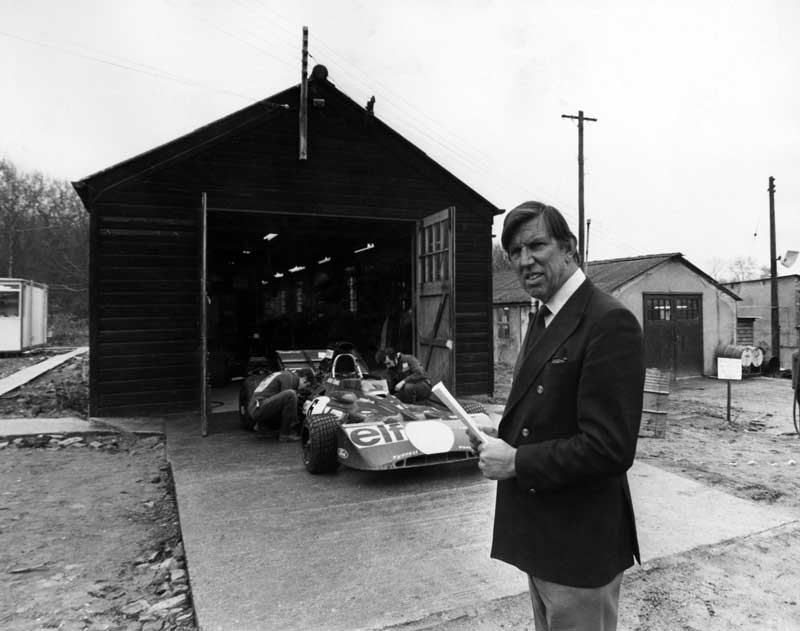
The Best Things Happen In An English Shed, Especially The Tyrrell Shed At Goodwood
The Tyrrell Shed once home of the World Championship winning Tyrrell Formula 1 team has been relocated to Goodwood and is set to open for
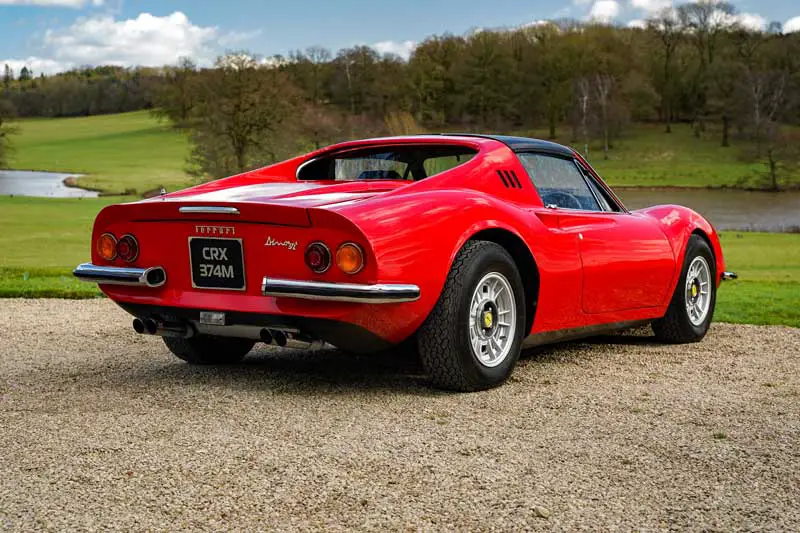
A 1973 Ferrari 246 Dino From The Manager Of Rock Legends Led Zeppelin Sold At Auction
Something of a piece of rock and roll history went for sale with the auction of Led Zeppelin manager Peter Grant’s old Ferrari 246 Dino
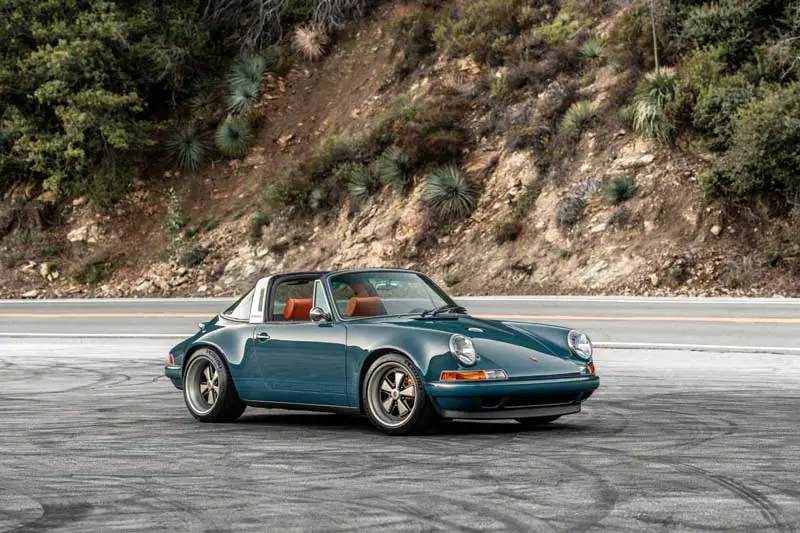
California Based Singer Has Completed Its 300th Restoration, The Sotto
Restomodders Singer have produced their 300th 911 already and it’s another964 based conversion called the Sotto. It’s almost hard to believe it was a964, though
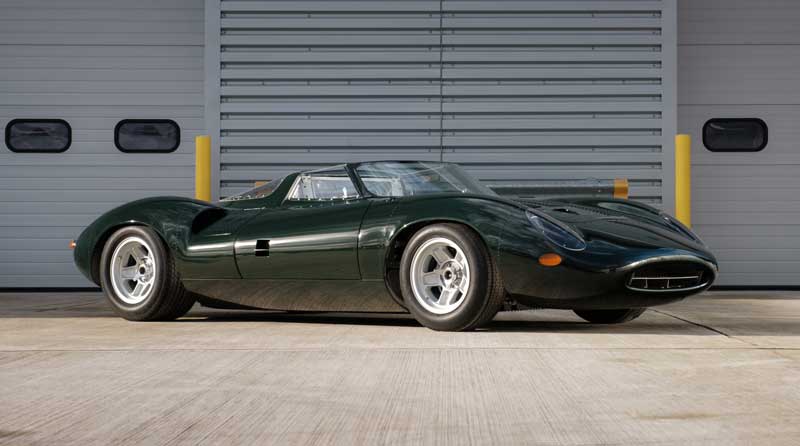
The True Spirit Of The Jaguar XJ13 Presented By JD Classics At Retromobile 2024
The masterpiece that is the Spirit of the XJ13 is unveiled at Retromobile 2024 by JD Classics of Chelmsford, England, and seen for the first
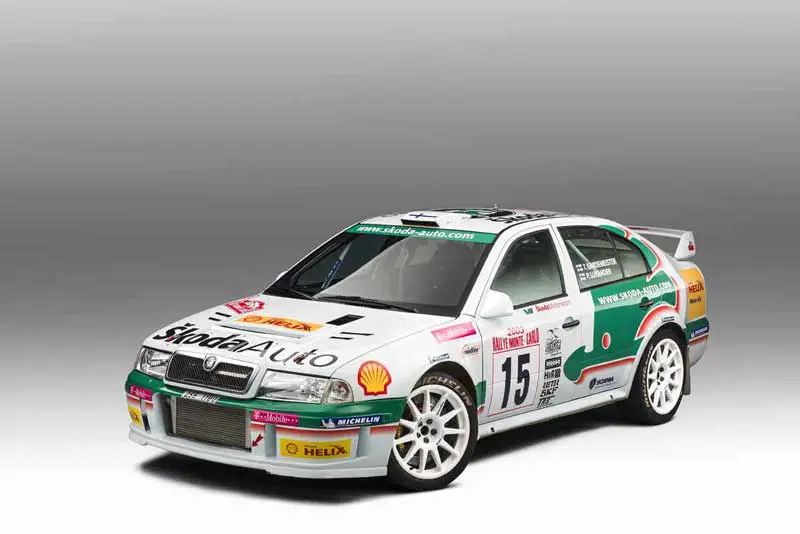
25 Years Of Škoda In The World Rally Championship
Škoda are no strangers to rallying having been successful for many years, but its now 25 years since their debut in the FIA World Rally
